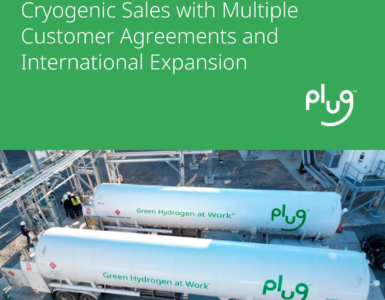Liquid hydrogen tank project fuels UK zero-carbon aviation ambitions.
A new project aims to develop key technologies and parts for the storage of liquid hydrogen, a zero-emission fuel that could play a significant role in UK and international efforts to reduce the environmental impact of aviation.
Targeting lightweight components and manufacturing methods capable of delivering large liquid hydrogen storage tanks for future aircraft, the Aether scheme is led by Farnborough aerospace manufacturing specialists Tisics and co-funded by the Aerospace Technology Institute (ATI), a joint government-industry programme.
Earlier this year, the ATI identified ‘green’ liquid hydrogen – produced using renewable energy – as the “the optimum fuel for zero-carbon emission flight”.
🔥 What about we co-host a webinar? Let's educate, captivate, and convert the hydrogen economy!
Hydrogen Central is the global go-to online magazine for the hydrogen economy, we can help you host impactful webinars that become a global reference on your topic and are an evergreen source of leads. Click here to request more details
The ATI announcement said.
Introducing a midsize hydrogen-powered aircraft by 2035 and a narrowbody aircraft by 2037 represents the greatest opportunity for reducing carbon emissions and maximising market impac.
“Aviation’s carbon emissions would reduce by four gigatonnes (Gt, billion tonnes) up to 2050, equivalent to four years’ of total global aviation carbon emissions, if half the commercial fleet were hydrogen-powered by then, and 14Gt by 2060.”
The Aether consortium, which also includes Loughborough’s M Wright & Sons, Oxford’s Oxeco and the University of Derby’s Institute for Innovation in Sustainable Engineering (IISE), aims to overcome the challenges faced by conventional materials when storing cryogenic hydrogen.
The partners hope to develop ‘scalable’ technology, optimising the use of different material systems to meet the functional needs of tanks for long-term, safe aviation use and provide the UK with opportunities to generate advanced tank manufacturing technologies with worldwide markets.
“Sustainable aviation is critical if the UK is to succeed in its net zero ambitions and ensure the UK leads the introduction of hydrogen powered aircraft. Estimates show that hydrogen combustion reduces in-flight climate impact by between 50-75% and fuel cell propulsion by 75-90%,” a Tisics announcement said.
Professor Simon Weeks, chief technology officer for the ATI, said:
Tisics and its consortium partners are developing a unique capability – one that is being applied to solve a significant challenge for hydrogen fuel storage systems.
“Their high-performance material solution will deliver much improved weight efficiency, and play an important role in making hydrogen powered aircraft a reality.”
Stephen Kyle-Henney, managing director of Tisics, said:
We’re excited to combine world-leading expertise in multi-material coatings, 3D woven composites, advanced modelling and net shape manufacture to tackle the challenge of delivering future lightweight hydrogen propulsion systems.
“Aether has the opportunity to create the fundamental building blocks that can accelerate the adoption of hydrogen powered systems manufacturing in the UK.”
Professor Angelo Maligno, professor of composite materials and project lead at the University of Derby, said:
We look forward to collaborating with our partners on this project to improve the reliability of materials and inform standards that guide development and use of hydrogen technologies.
“The team is enthusiastic to contribute to this research on storage systems for liquid hydrogen, which will have a significant impact on reducing the carbon footprint in aviation.”
Liquid hydrogen tank project fuels UK’s zero-carbon aviation ambitions, November 16, 2022








